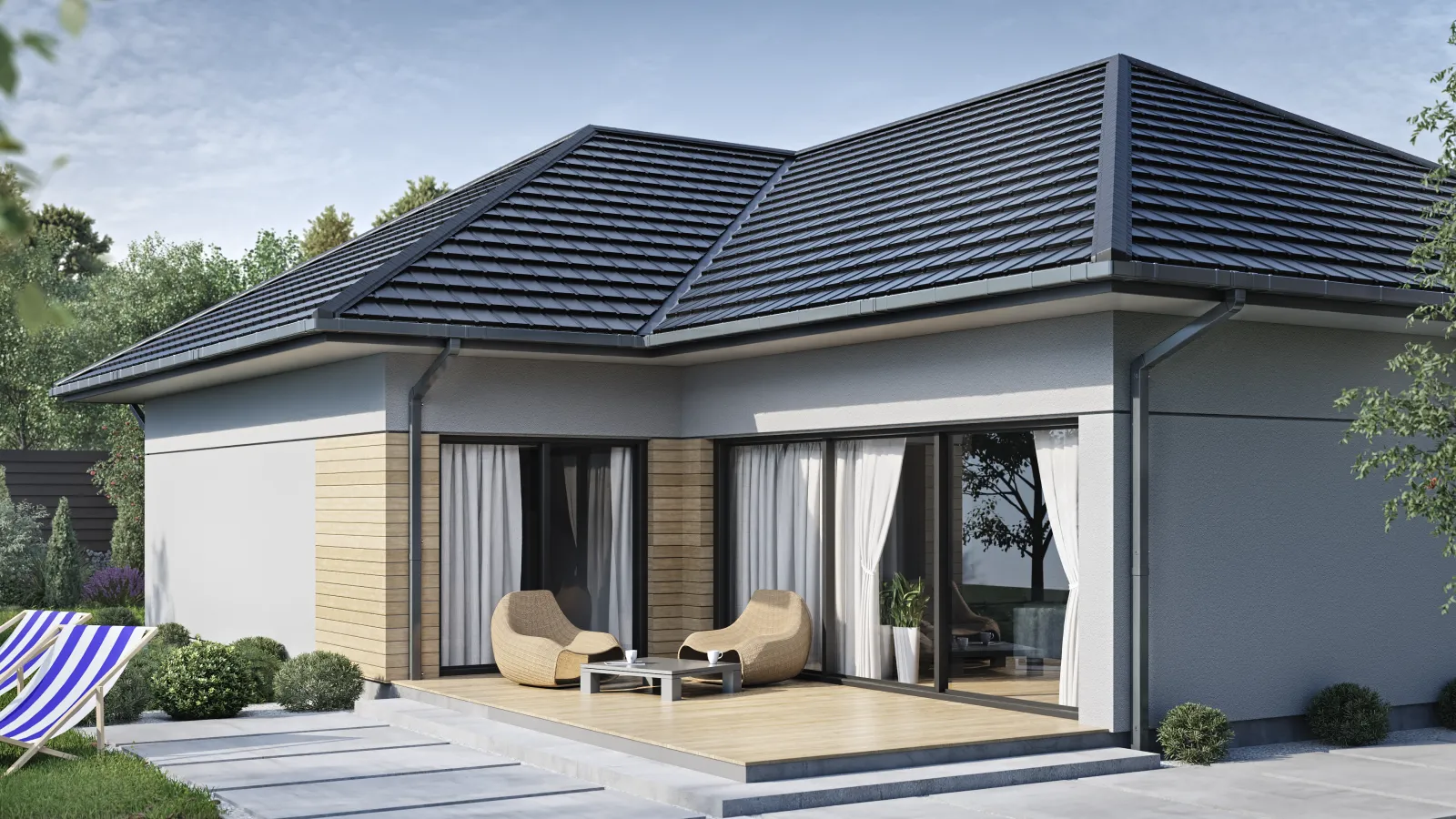What are the standard gutter sizes?

To create an effective and durable gutter system, it is essential to properly match its individual components. The key factor will be the size of the roof gutters, which should be considered first. How can you choose solutions that will work well for your house or any other building? Here are some valuable tips.
EPD – gutters matched to the roof
When selecting the correct dimensions of gutters and designing a system that will effectively drain water, it is worth using a specific formula. We recommend the EPD method, which stands for Effective Roof Area. Thanks to this, you can match the gutter cross-section and find the ideal solution, regardless of the type of building.
The EPD is calculated using the following formula:
EPD (m²) = (C/2 + B) × roof length
- C = height of the roof from the base to the ridge
- B = distance from the edge of the roof to the ridge
- Roof length = necessary to determine the correct length of gutters
By calculating the Effective Roof Area, you will not only be able to choose the right gutters, but you will also find it easier to plan their layout. If you prefer not to calculate the EPD yourself, you can use ready-made calculators available online.
Remember: choosing the right gutter size is very important. If the gutters are too small, rainwater will run down the walls. If they are too large, you risk unnecessary extra costs.
How to choose the size of gutters and downpipes
The sizes of gutters and downpipes should be selected according to the calculated roof area. The key factor is the diameter – each corresponds to an approximate drainage surface.
It is assumed that:
- for smaller roofs (up to 50 m²) downpipes should have a diameter of around 80 mm, and gutters 100 mm
- for medium roofs (50–100 m²) downpipes should have a diameter of around 90 mm, and gutters 120 mm
- for large roofs (over 100 m²) downpipes should have a diameter of at least 110 mm, and gutters 150 mm
Of course, these values are approximate – it is best to first calculate the EPD and then select plastic, steel or aluminium gutters based on the result. For any doubts or particularly complex roof structures, it is worth consulting a specialist who will help you choose the right solution.
Remember: when choosing the sizes of PVC or any other gutters, also take the roof slope into account. If it is less than 10 degrees, the EPD is equal to the total roof area. If the gutter is curved (in more complex roofs), consider the position of the outlet: if it is more than 2 metres from the corner, add 5% to the EPD; if it is less than 2 metres, add 10%.
Gutter size selection table
| Effective Roof Area (EPD) | Gutter diameter | Downpipe diameter |
|---|---|---|
| up to 50 m² | 100 mm | 80 mm |
| 50–100 m² | 120 mm | 90 mm |
| over 100 m² | min. 150 mm | min. 110 mm |
Note: increasing the gutter diameter always requires a larger downpipe – only then will the drainage system work efficiently.
Gutter length, thickness and width
The diameter (or width) of the gutter is the most important parameter, but not the only one to consider. Other crucial aspects are:
- gutter length – should match the length of the roof to ensure effective water drainage
- gutter thickness – the greater the thickness, the better the resistance to mechanical damage
When buying the right solution, you should not only know the dimensions but also the material. Choose only materials that guarantee high resistance to corrosion, mechanical damage, and UV radiation. We recommend both more affordable plastic gutters and more durable steel or aluminium options – by investing in them, you can be sure they will perform well even after many years and remain visually appealing.
Gutter shape
If you want your roof drainage system to be effective, you should pay attention not only to the size of PVC or steel gutters but also to their shape.
The most popular on the market are semi-circular gutters – they are very versatile and suitable for various systems and buildings.
Another increasingly popular choice is square gutters – they are deeper and therefore provide better protection during sudden weather changes. However, they will not work in every system, so it is best to consult specialists before choosing.
